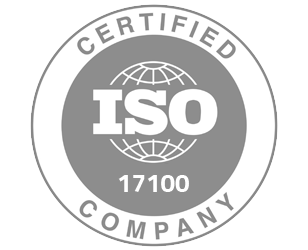.jpg)
The Latest Trends and Challenges in AI Translation
Artificial Intelligence (AI) is transforming various industries, and language translation is no exception. With its potential to revolutionize global communication, AI-powered translation technology offers numerous benefits, including cost and time efficiency, real-time translation, and improved accessibility. However, challenges like ensuring accuracy and addressing bias remain. In this article, we’ll discuss the latest trends in AI translation services, the benefits and limitations of machine translation, and explore what the future holds for this technology.
Benefits of Using AI in Translation
-
Speed: One of the biggest benefits of machine translation is speed. AI algorithms can process large volumes of text in real time, allowing for almost instant communication across different languages. This can be especially useful for businesses and organizations that need to communicate quickly and efficiently with customers or partners in different countries. For example, AI translation can be used to quickly translate customer service chats or social media messages, allowing businesses to respond to inquiries and concerns in real time.
-
Cost-Effective: Using machine translation offers a cost-effective solution for many businesses, particularly when perfect accuracy or nuanced understanding is not critical. This is especially useful in scenarios like internal communications where the primary goal is to convey basic information quickly across different language speakers within a company. In such cases, slight imperfections in translation are acceptable, as the communication's intent is generally understood even if the language isn't perfectly polished.
-
Consistency: AI translation offers a distinct advantage in ensuring emotional consistency and maintaining a polite tone across communications, particularly in customer service chatbots. Unlike human operators, who might occasionally vary in tone due to mood fluctuations, AI-powered chatbots adhere to predefined response templates and tone guidelines. However, it is crucial to have these responses reviewed and verified by professional translators to ensure accuracy and cultural appropriateness.
-
Customization: AI-powered language translation can be customized by translation agencies to meet the specific needs of various industries or contexts, significantly improving the precision and relevance of translations. For instance, agencies can configure AI systems with custom glossaries and terminology management for sectors like the legal or medical industries, where accuracy is paramount. These glossaries include specialized terms crucial for ensuring both clarity and compliance.
Challenges in AI Translation
- Accuracy: AI translation algorithms are designed to analyze large volumes of data and identify patterns to generate translations. However, language is complex and nuanced, and algorithms still struggle to translate idioms, slang, or regional dialects accurately. For example, an algorithm may mistranslate a phrase like "kick the bucket" as an instruction to kick a bucket physically, rather than understanding it as a euphemism for dying. Additionally, certain languages may have complex grammar rules that algorithms can’t interpret.
- Cultural nuances: Language is deeply intertwined with culture, and AI translation may struggle to capture the nuances of a particular culture's language. This can result in translations that are technically correct but do not convey the intended meaning. For example, the phrase "no problem" in English may be interpreted as an insincere response in some cultures, where it is more appropriate to use a phrase like "you're welcome.
- Data privacy: AI-powered translation relies on data, which may include sensitive information. This raises concerns about data privacy and security, as well as the potential for bias in the translations.
- Ethical and Social Considerations: AI translation systems can unintentionally propagate biases present in training data. For example, misrepresenting gender roles based on stereotypes, such as assuming 'mechanic' typically refers to a male, showcases the need for mechanisms to identify and correct these biases to prevent perpetuating outdated social norms.
What's New in AI Translation?
-
Machine Translation Post-Editing (MTPE): MTPE combines the speed of machine translation with the accuracy of human proficiency. Translation agencies use this process to refine AI-generated translations, correct errors, improve fluency and ensure cultural and contextual accuracy. Widely applied in fields like legal, medical, and technical translation, MTPE provides a cost-effective and efficient solution without compromising quality.
-
Machine Translation Quality Estimation (MTQE): MTQE allows translation agencies to assess the reliability of AI-generated translations by analyzing sentence structure, terminology, and context. This process identifies high-quality sections and flags areas requiring human review, enabling agencies to focus editing efforts where needed.
-
Customization and Specialized Training: Customization of AI translation models to meet specific industry and client requirements is becoming a significant trend. Translation agencies are training AI systems with domain-specific data to improve accuracy and contextual relevance for fields such as healthcare, legal, and technical industries. The integration of custom glossaries, style guides, and terminology databases ensures consistency with client-specific standards. Additionally, region-specific models addressing dialects and cultural nuances are gaining importance, enabling more precise and relevant translations.
-
Real-Time Translation Technology: Technologies such as Google Translate’s real-time conversation mode and Microsoft Translator live feature enable instant, accurate translations during live communications. These tools are particularly useful in customer service scenarios, allowing representatives to interact seamlessly with customers in multiple languages without delays.
-
Augmented Reality Integration: Microsoft's HoloLens uses AI to integrate translation with augmented reality, enabling users to view restaurant menus in their own language through the device's lens. This innovative use of AR provides interactive and real-time translation, enhancing the user experience in everyday scenarios.
-
Automated and Contextual Localization: AI tools now better handle the localization of content. For instance, AI-driven platforms like Adobe Experience Manager use AI to automate the adaptation of marketing content, adjusting images, currencies, units of measure, and cultural references to suit specific regional markets.
-
Speech-to-Speech Translation: Improvements in speech recognition and synthesis technologies enable more effective speech-to-speech translation systems, which are crucial for real-time interpersonal communication across different languages.
-
Focus on Underrepresented Languages: There is a growing emphasis on enhancing translation capabilities for languages that have traditionally lacked support. Examples include indigenous languages like Quechua and Navajo, African languages such as Yoruba and Amharic, and lesser-spoken Asian languages like Kazakh and Khmer.
AI language translation technology has made notable progress in improving global communication for businesses and individuals. However, its limitations in addressing accuracy and cultural nuances highlight the need for human expertise to ensure high-quality results.
At PoliLingua, we provide flexible translation services that adapt to specific requirements. Whether clients need AI-powered translation for efficiency, a combination of AI and human review for accuracy and nuance, or exclusively human translation for sensitive or complex projects, we deliver solutions designed to meet their goals.







